Cursive Handwriting’s Link to The Leaning Tower of Literacy
This post may contain affiliate links.
 “Once you learn to read, you will be forever free.”
“Once you learn to read, you will be forever free.”
(Frederick Douglass)
One of my favorite quotes is from an article in the Journal of Education Psychology, titled “The Role of Mechanics in Composing of Elementary School Students: A New Methodological Approach.” (1) It goes like this:
“Reading is at the heart of education, the basic skill upon which all others are built.”
The authors’ next sentence, however, makes me smile:
“Learning to write letters and spell words reinforces the letter-naming, phonemic, and word-deciphering skills required in developing literacy.”
And that is so reinforcing to those of us who are passionate about the teaching and mastery of handwriting skills.
Although that information definitely lends credence to the vital role that the learning of handwriting skills plays in educational success, some of us continue to seek the role (or lack of one) of teaching cursive in our schools. Should cursive be continued as a choice for students who would benefit from the fluid process that it offers? Can cursive ride along side manuscript as a partner in the development of a legible handwriting style? Handwriting mastery, the ability to use a set of letter formations efficiently to produce a legible and coherent product, has been considered to be a vital facet of the foundation of literacy. Studies have shown that teachers will assign “higher marks for overall quality of writing” for papers that are legible versus those that are not, although the content is the same. In turn, the ability to read one’s own, as well as another’s, handwriting is an important form of communication. When it comes to cursive, we should be able to decipher it, at least. Just for fun let’s try something here. Can you read this:
*($!{$ %_+$ @_ +> _^^’%$ ^_= ! +$$@’&/ @<$ )_{{
Imagine if you found this note on your desk at work! What would you do? Suppose that everyone else in the office was proficient with the secret code (below) that would give them the insight they needed to respond to this note? Suppose that they expected that you would also know the code since you were hired there and must be as competent as they are? Would you feel comfortable going over to one of them and saying, “I’m sorry, but I can’t read secret code. I never learned it. Could you read it for me?”
That’s the way a person feels when he cannot read cursive. In spite of this, the argument remains that cursive is simply an antiquated style of writing that requires students to “unlearn” their manuscript and relearn a new style. Before we tackle that subject, let’s back up and take a look at handwriting in general, for a moment, from a literacy standpoint.
The definition of literacy in its simplest form is “the ability to read and write.” Going a bit further, it means the “ability to use language proficiently.” Language is not restricted to the vocalization of sounds and speaking of words. The four basic language skills include listening, speaking, reading, and writing. And these four basic skills are related to each other through either being oral or written or by being on the receiving or producing end of a message. Language, then,
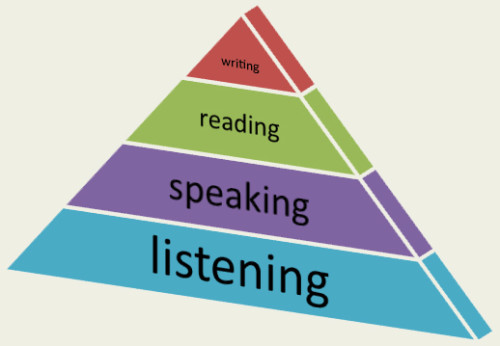
Family on Bikes Blog
includes being able to produce a message that can be read by others and vice versa. Reading is indeed “at the heart of education.” But, according to The Write Connections, March 2012 Newsletter, “Reading and writing are like yin and yang; they are perfectly harmonizing opposites.” While reading takes care of the process of decoding, writing takes charge of the process of encoding. Spelling also utilizes the encoding process and it aids in the mastery of reading as it “helps cement the connection that is shared between sounds and letters.” According to Vocabulary.co.il, “Spelling and reading have a common factor, proficiency with language.” And this leads us to the significance of learning to write by hand.
The Write Connections Newsletter shared the results from a 1990 study that “showed that writing by hand reinforces spelling skills.” It seems that when first graders wrote their spelling words (versus typing them), they scored higher on spelling tests than the “typers.” According to J. Richard Gentry, Ph.D. and Steve Graham, Ed.D., in their white paper titled, “Creating Better Readers and Writers: The Importance of Direct, Systematic Spelling and Handwriting Instruction in Improving Academic Performance,” spelling, handwriting, and phonics instruction are the “foundations of literacy.” Handwriting and spelling are connected in a special way in that the practice of manuscript aids in the development of letter recognition – a key for spelling efficiency. Progessive Phonics reminds us that “when we write, we activate kinesthetic (motion) memory, which is the earliest, strongest and some say the most reliable memory channel.” The time it takes to write a word (versus read it) gives “the brain twenty times more exposure to a word.”
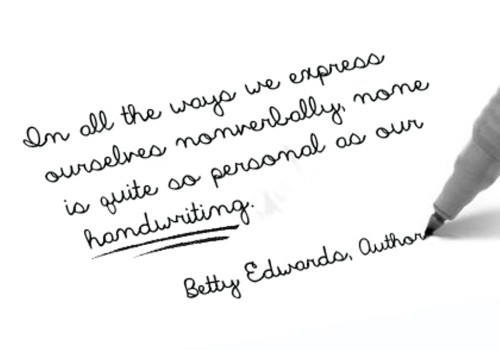
The question here becomes, “Does it matter which handwriting style we teach?” Steve Graham, in his 2011 interview with the Indiana Public Media, reminds us that the strong educational implications that handwriting has on grades and writing skills does not depend upon a particular type of handwriting – manuscript or cursive. Given the fact that legibility can affect grades and fluency, he feels that it simply needs to be good handwriting – no matter the style of penmanship. The language of handwriting – it’s ability to communicate thoughts and information – is based upon it’s ability to be read and understood…not in which style it is presented.
Now going back to my Secret Code note above, couldn’t we solve this problem by simply having everyone write in manuscript to facilitate those who can only read and comprehend that handwriting style? Or is there a simpler way? Kate Gladstone, owner of Handwriting Repair, offers one solution. In a 2013 NEA Today interview, she informs us that to solve the “reading of cursive” we don’t have to teach the “writing of it.” She reports that “it only takes 30-60 minutes to teach someone, even as young as 5-6 year olds, to read cursive once they can read ordinary print.” In addition, she shares that samplings for teachers’ handwriting have shown that most adults form their own personal style by mixing some manuscript and cursive together.
Another solution comes from the proponents for Teaching Cursive First who agree with those who feel that it is a waste of valuable education time to “unteach” information that has already been learned. In these corners, it is felt that teaching cursive first makes sense because, among many reasons sited, it “involves a flowing, uninterrupted movement which reinforces the left-to-right directionality of our written language,” and the connections enhance the flow of thought and “thinking ahead while writing.” They state that, given the fact that Great Britain is the only country in Europe who doesn’t teach cursive first, and that the European literacy rate has not suffered by the introduction of cursive first, couldn’t we save precious educational time by simply teaching cursive right from the start?

Taking notes in class, leaving a note for mom, making a list of homework assignments: chances are that even if a student has a smart phone, he will have to pick up a writing utensil once or twice to accomplish these tasks. And, as he becomes “of cursive age,” he will come in contact with a note or letter from someone who actually can write in cursive.
Let me leave you with these little tidbits from my experience with children who struggle with, and have been left in the dark about, cursive:
“My grandmother sent me a card and I couldn’t read it because it was in cursive. When I sent her a note, she called my mother and asked, ‘Why is he printing? He’s in 9th grade!’ I was embarrassed.”
“I want to learn cursive because my printing is terrible and my teachers are ‘yelling at me’ to write better.”
In both cases, we tried it and they experienced “handwriting success.”
My questions to my readers is this:
Is our complacency about the inability to read cursive (by belittling the style’s importance altogether) leading toward the prospect of turning out a generation of handwriting illiterates?
Please let me know your thoughts!
Decoder:
* = p ( = l $ = e ! = a { = s % = c _ is o + = m @ = t > = y ^ = f ‘ = i = is r & = n / = g < = h ) = b
(1) Graham S., Bereninger, V., Abbott, R., Abbott, S. and Whitaker, D. (1997). The role of mechanics in composing of elementary school students: a new methodological approach. Journal of Educational Pyschology, Vol 92.
Katherine J. Collmer, M.Ed., OTR/L, is a pediatric occupational therapist who owns and operates a clinic that specializes in the assessment and remediation of handwriting skills. She can be contacted via her website, www.handwritingwithkatherine.com.




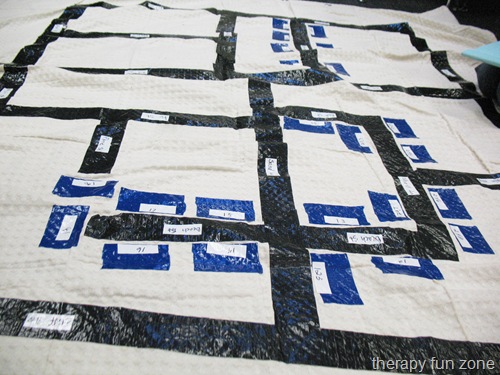
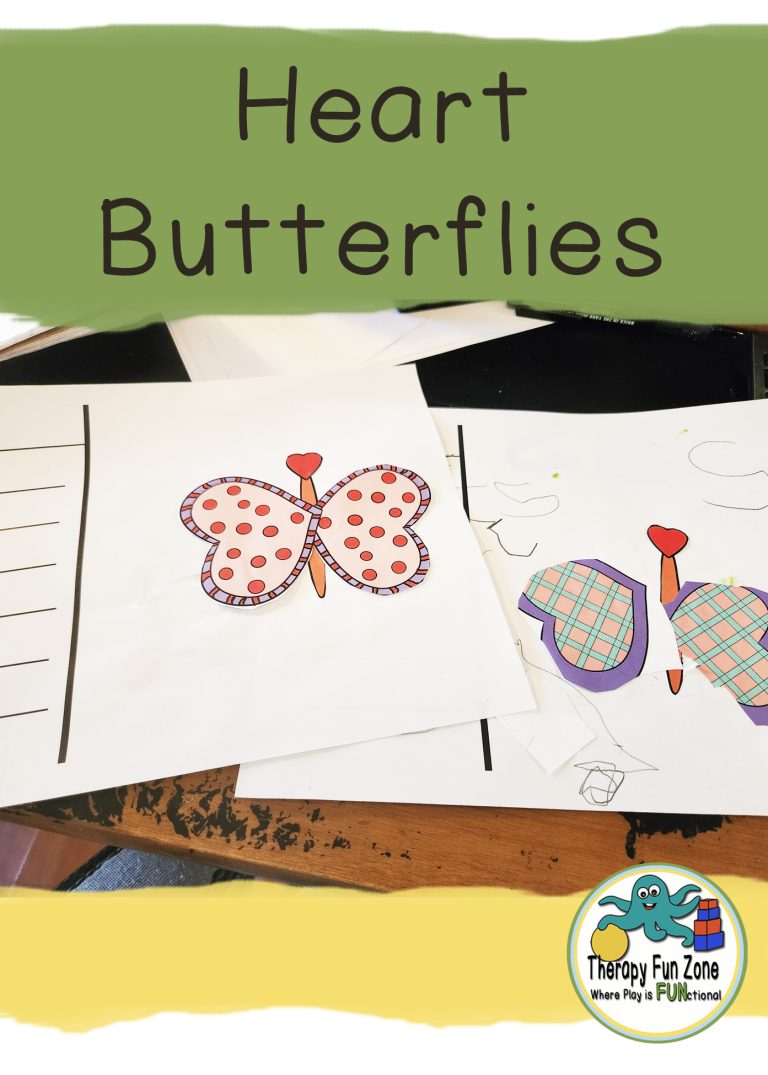

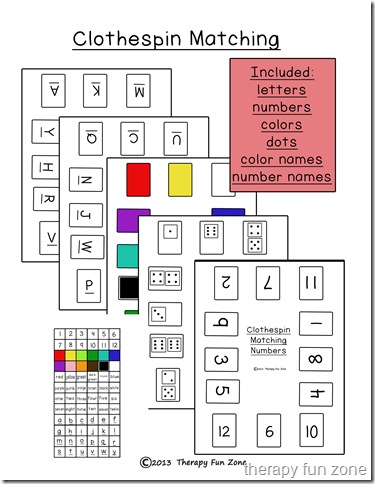
Thanks for quoting me on cursive and related matters. The paragraph after your mention of me, though, is the one that I need to address. You write:
“… Great Britain is the only country in Europe who doesn’t teach cursive first… ”
That assertion is frequent but false. As I write this, at least 45% of the European nations teach separate letters first. Among them is Finland, whose literacy and academic achieve scores consistently place #1 on worldwide comparisons.
Other countries in Europe where a separate-letters style has long been in use as the first stage include (but are not limited to) Norway, Sweden, Denmark, Iceland, and Czechoslovakia (now the Czech Republic and Slovakia). Three other countries — Switzerland, Germany, and France — have recently adopted systems in which individual schools or districts areal lowed to decide for themselves whether to begin instruction with separate letters (followed by a semi-joined form consistent with the handwriting research noted in your description my own work) or with a joined form as had previously been the case.
Further — in several European countries, including Finland and one of the others named — the writing forms whose names are usually translated into English as “”cursive” would not, in fact, be regarded as “cursive” by proponents of cursive handwriting in the USA or Canada (where most of cursive’s proponents live and work). The style described as “cursive” in documentation on Finland, for example — what is taught after the beginning separate-letters stage — is a semi-joined system with print-like letter-forms (very. Visibly so, in cases where the printed letter disagrees with its conventional cursive form). The same is true for most styles described as “cursive” in the other countries named above.
Although such handwriting models are consistent with the research of which you are aware — actually, BECAUSE they are consistent with the research — they would not be regarded as “cursive” by American proponents of cursive. In other words: when I show examples of such writing to American teachers who are proponents of cursive (and who cite the allegedly universal cursive of Europe), I am told “No, that is not cursive” even though the person denying that such European script is cursive has just urged me to follow Europe’s (presumed) example.
Note that the same circumstance (of “cursive” not being what you thought it was) is usual, not merely in Europe, but throughout the English-speaking world outside of North America. About half of the writing methods taught as “cursive” in the UK, and about 85% of the writing methods taught as “cursive” in Australia and New Zealand, are semi-joined and with print-like firms of most or all the letters that disagree between printing and cursive.
Could you please update your blog to record the reality of the situation? I would be glad to help, if you wished. Accuracy and integrity are important in education, in all subjects — progress in such an important matter as handwriting must not remain the victim of mistaken assumptions and wrong or out-of-date info about who’s teaching what.
“print-like firms” was intended to be “print-like forms” … Please note and, if possible, correct!
Kate, Thank you so much for your feedback. I value your expertise and am honored that you have read the article. I feel that, although “cursive” can be the label for the type of joined handwriting that we typically teach here in the US, cursive is a collective group of handwriting styles that join any type of letter formations. Cursive, in my opinion as a handwriting specialist, is any type of handwriting style that allows a writer to join ball-and-stick, italic, or even styles that are not at all used in the US to create a fluid, consecutive flow of writing, versus the stop-and-start procedures that ball-and-stick demand. I personally am open to any style of handwriting that allows this. In my research and during my work with students with handwriting needs (which I consider to be special needs), I have found that the ability to join letters according to what “works for each student” affords each writer with the opportunity to communicate through the language of handwriting, and is often the solution to their handwriting needs. With that said, I am a firm believer that letter recognition is the primary element that lays the foundation for reading and a fluid handwriting style of any type. So, therein lies the question that I pose to my readers, IS cursive (or any style that is similar) the answer to handwriting struggles? Or perhaps would the elimination of manuscript rob our students of the vital letter recognition skills they will need to be efficient readers, as well. Again, thanks for your comments. I look forward to your response.
Katherine — thanks for responding.
Let’s start with terminology: an important issue that you rightly raise.
To be clear about the terminology issues, increasingly I call the 100%-joined form of cursive “conventional cursive” and I will refer to any other form of joinable writing as, well, “joinable writing.” Some, but not all, forms of joinable writing are indeed clear and fluent — some aren’t: as is also the case with the various forms of separate-letter writing.
WHY THE TERMINOLOGY ISSUE HAS LARGE CONSEQUENCES (WHICH ARE PROBLEMS) FOR HANDWRITING PROGRAM SELECTION AND APPLICATION:
Too often, the proponents of “cursive handwriting” don’t define (even when they are asked!) what they mean when they say “cursive.” (For example, in those states that have adopted laws mandating cursive instruction — or that are considering such laws — NOT ONE of the people or organizations involved has ever specified what they mean by “cursive”: which means that there is no way for any teacher or administrator (let alone an OT or a parent) to know whether a successful joinable writing program (such as BFHhandwriting.com or handwritingsuccess.com) is going to be permitted or forbidden by the people in charge. (Even dictionaries differ in how they define “cursive.” Some dictionaries define it as I’ve defined “joinable writing,” while others restrict it to what I’ve called “conventional cursive.” Depending on which dictionaries the teacher and the OT and the principal feel like using, a particular program could be either “cursive” or “not cursive” — either permitted or forbidden, under the terms of some ill-defined mandate or ambiguous school board regulation or administrative office memo. This means that good joinable writing programs — which are more helpful, to many students, than conventional cursive programs — may not even be considered, because nobody wants to take on the responsibility of deciding whether they are, or aren’t, “cursive” in the light of regulations that leave the term unclear. To mandate “cursive” — undefined — is no more helpful, or otherwise addressable, than to mandate “jabberwock” or “etaoinshrdlu.”)
Worse yet, the proponents of cursive-mandate bills take advantage of the confusion. When they want to claim that all the rest of the world uses cursive-first or cursive-only, this is true ONLY if the definition of “cursive” is “joinable writing” — yet the cursive proponents do NOT regard all joinable writing as cursive. They use the word “cursive” to mean one thing at one moment (when they want you to think “All other countries use cursive”), but when you ask them if a joinable writing is cursive thought it is not 100% joined! they tell you “No.”
Here’s an example of how this plays out — here’s what happens when I confront cursive-mandate proponents with the joinable writing typically taught in Australia and some other British Commonwealth locales, and widely taught in various European countries such as Finland: which is print-like in letter-shapes and is NOT totally joined even though it is officially called “cursive” locally or in translation. Whenever I show samples of Australian or Finnish school handwriting models to a cursive proponent who has just told me “All nations that use the ABC use cursive first, or cursive-only, and we should too, so our writing can be fluent,” I ask the cursive proponent: “Are these cursive?” The cursive proponent always tells me: “No, these are not cursive at all. They are only printing” (despite the joins and evident fluency, which the cursive proponent may admit if asked!) When I ask the cursive proponent if his/per proposed cursive mandate would permit, or forbid, the Australian or Finnish (or whatever) program, s/he responds that his/her desired mandate would forbid it — even though s/he wants this program counted as “cursive” when it comes to making claims about where cursive is used and who’s using it! Changing what your words stand for, in the middle of a discussion, is not a way to win the discussion legitimately — is such a maneuver ever used by anyone who believes that his/her cause COULD win in a legitimate discussion?
Regarding the larger question of which form of writing is best to teach and use:
In my observation and experience, no form of writing is a “magic potion” that would prevent all errors of teaching and learning in the subject. However, some forms pose far fewer obstacles than the conventional forms, when it comes to effective teaching/learning/use of what is taught — in other words, when it comes to gaining most significant and longest-lasting (lifelong) “return on investment” for the time, effort, and other expenditures made by the teacher/OT/parent, by the learner — and by those who will eventually have to deal with the learner’s handwriting! Again in my observation and experience, the approach to handwriting design/models/instruction which presents THE fewest obstacles, and provides the largest and most effective “return on investment” lifelong is the italic handwriting approach in its several varieties. Here are links to a half-dozen web-sites for the italic handwriting sources/resources I use most: http://www.BFHhandwriting.com, http://www.handwritingsuccess.com, http://www.briem.net, http://www.HandwritingThatWorks.com, http://www.italic-handwriting.org, http://www.studioarts.net/calligraphy/italic/hwlesson.html
Kate, Thank you so much for this valuable information. I will look into the websites. I have been a long-time proponent of the belief that there is no one way to teach handwriting. For me, it truly does not matter which program is used, as long as it is taught consistently and with adequate observation and guidance. However, I am also not ready to believe that there is only one way to produce an efficient handwriting style. My main concern with omitting manuscript from the curriculum are the literacy benefits that Steve Graham and his peers have indicated result from the learning of letter formations. I am currently researching that area. But, my current concern is more about the availability of cursive/joined letter writing styles that allow students who are not successful with manuscript to succeed with handwriting skills. I will leave the advocacy for what is taught in the schools to experts such as yourself who have been working toward this end for some time. My aim is to continue to have access to joined letter styles for students who do want to take that route and for whom will benefit. In addition, my goal is to encourage students who have succeeded with cursive/joined letter styles to USE them once they’ve gained the skills! The teachers discourage their use…yes, it’s true…even when the student has spent months learning them with me and have demonstrated an improved and legible writing style with them. Beats me, but it is true. Thank you again for your input. As always, I have learned a great deal and will take this information further with me in my work.
I, too, do not believe that there’s any One True Right And Only Possible Way to teach handwriting, or that only simple handwriting can be learnable. (Such assumptions, if made, would be disproven by the mere EXISTENCE of complex/accident-prone — yet learnable — systems. Analogy: Learning th read/write with an alphabet is easier than learning to read/write the thousands of characters used for writing Chinese — yet the Chinese written language still exists, and is successfully taught: it is simply HARDER to teach and to learn.) In the same way, I believe that any system of handwriting CAN be taught, CAN be learned — if it is a system at all, and if the teaching is systematic — but obviously a simple and accident-resistant system makes the job easier and wastes less effort (for the teacher, the learner and the eventual readers of the results) than a complex and accident-prone system.
Re “omitting manuscript from the curriculum” — what would that mean? Teaching cursive first, and cursive only? If so, I certainly oppose it — as would you. When you say “manuscript,” what do you mean by that word: simply “letters that are not [yet] joined,” or some particular KIND of not-joined letters? I ask this because — when I have people look at italic — some say “this handwriting is a kind of manuscript,” some say “this is NOT a kind of manuscript,” some say “it is a kind of cursive,” some say “it is NOT a kind of cursive” … and some people have even said “this handwriting here [italic] does not and cannot exist because it is neither manuscript nor cursive, which are the only two possible handwriting anywhere.” (If you can figure out what anyone meant by THAT, please let me know … I’m still puzzling over that one.)
I understand that your current concern is for finding a form(s) of handwriting that helps students who have already been failed by conventional handwriting instruction — do I correctly understand this? It is an important mission — but why wait until AFTER failure before teaching something with higher odds of success? Isn’t preventing a problem at least as important as rescuing the survivors afterward? (To use the analogy that heads your blog-post — it’s nice that we can prevent a leaning tower from collapsing today … But it would have been a lot better to mjake sure that it was straight and sound to begin with. The more “towers of literacy” can be built on good, consistent foundations from the start, the fewer “repair jobs” will be needed later on.)
You mention Steve Graham — if you are referring to his research on conventional print-writing versus print-writing that allows any slant to occur, be aware that the only two forms of print-writing he tested were a vertical form (Zaner-Bloser, the firm that supported his research) and an extremely slanted (seventeen degrees) form (D’Nealian, which was the biggest competitor of Z-B at the time he was comparing the two). He has never, to my knowledge, looked at anything else, and he claims (when asked) that he already knows _a_priori_ that it would never be necessary to look into anything else when determining how to teach a beginner. (For instance, more than once he has been asked — by me, and — as I recollect — by Nan Barchowsky who’s also commenting here — if he would like to examine and comment on the extensive letter-form legibility esearch done by Rosemary Sassoin, which shows that the letter-forms most easily read by beginners and others of elementary school age are (contrary to _a_priori_ expectations) those that have a very slight slant (about 5 degrees) and an oval construction. (In fact, of the different letter-forms tested in Sassoon’s research, the worst scorer was the one which most closely replicates conventional vertical/circular print-writing such as is used for beginners in Zaner-Bloser and other conventional programs. The second-worst scorer — a very close second, in fact — was Times Roman type-font. Graham has, more than once, been asked for his own “take” on these facts, and has stated only that he will not address them.)
While reading and writing are “perfectly harmonizing opposites,” I submit that learning to write is a direct pathway to learning to read. It may not be so in exceptional cases, but if one is forming letters by hand, they are implanting them into motor memory for recall when reading.
I have successfully taught italic for almost 40 years. It’s advantages are that one begins with one alphabet that develops into a cursive hand (no “waste of valuable educational time”) because the letter forms do not change. The letters that children first learn look similar to typed letters, yet the strokes that form them flow with more natural hand movements than for the stiff print-script/manuscript letters.
Kate Gladstone’s reply mentions Finland and a few other countries where italic is either the nationally prescribed hand, or is recognized. She is quite right that many in the US and Canada do not recognize italic as cursive because all letters are not joined in words. In your response to Kate, I appreciate your recognition of various forms of cursive.
Thank you so much, Nan, for reading my work and for sharing your thoughts. I agree that “learning to write is a direct pathway to learning to read.” And, as I am getting further into my research and direct experience with handwriting, I am looking more and more at the various options for teaching handwriting skills from the start. I do like both yours and Kate’s styles of handwriting and have been convinced that, in the end, a personal handwriting style that is “functional” – meaning both the writer and the reader can benefit from it – is a culmination of many styles and experiences that the writer travels through. As Kate has pointed out quite often, an adult’s handwriting style is a combination, most times, of both manuscript and cursive. With that said, I believe that “cursive,” although in this country we take it to me something like the Palmer Method, etc., it is truly a form of handwriting that links together the letters in some way or another. That is my opinion, of course, not research-based! AND, I am digging deeper into the link between letter recognition skills and literacy, as well as the many facets of handwriting as I continue on my travels in this area. Thanks again for commenting and reading! I look forward to your continued responses.
Of note is an article on handwrlting improvement for adults: much or all of what’s said will apply to younger folks as well — http://www.theguardian.com/lifeandstyle/2014/may/11/how-improve-your-handwriting
I saw, with pleasure, that italic is mentioned as a possibility for those to whom it appeals — and that there is encouragement to select a form of handwriting that one would actually LIKE to use.
What bothers me even more than a teacherly insistence on joining all the letters, and so on, is the recurrent superstition that those who do not write in that way are somehow less human — or less than human. For example: the mythology about handwriting, in recent years, has come to include assertions that people who do not learn to write in cursive will be forever unable to experience empathy or to demonstrate it in their own lives. (Those who make the claim, by the way, are all defining “cursive” in the most restrictive way: as joining all the letters, and as using the specifically non-print-like forms of letters that disagree between printing and cursive.)
If you found it as hard as I did to believe that any professional could seriously be making that claim to the public, simply Google the two words “cursive” and “empathy” and start reading what comes up. That claim, as you will soon see, he claim is being promoted largely by graphologists, who are to some degree organized as a lobby. (They regard their endeavor as a scientifically proven profession.)
Predictably,many of the graphologists publicly asserting (and teaching in their courses) that cursive handwriting is the cause of human empathy are also the designers or promoters of cursive handwriting courses which claim to remodel your personality along with your penmanship. With or without such courses, I am concerned about the claims alone. From seriously claiming that cursive is how you get empathy, it’s a VERY short step to “behaviorally profiling” people by looking at their handwriting and deciding that the people who don’t join all their letters, and so forth, are horrid.
What do you think?